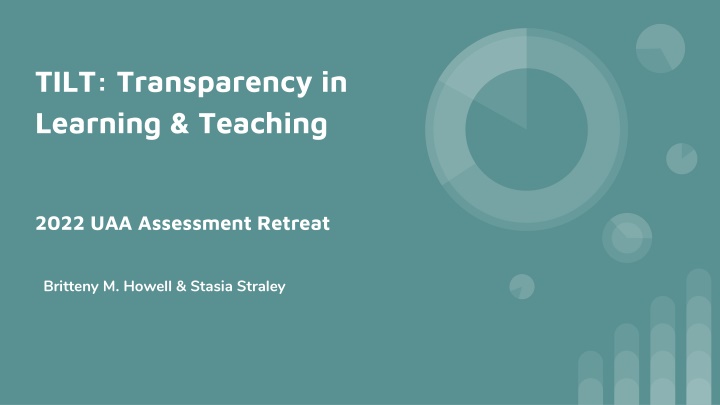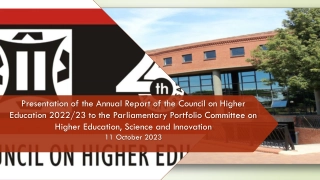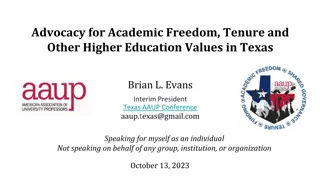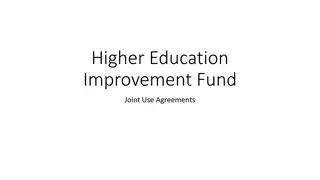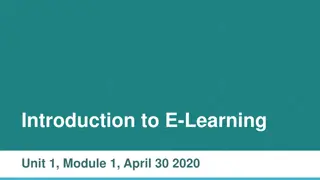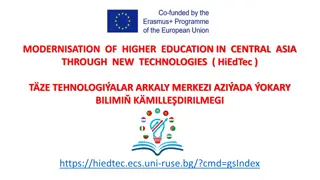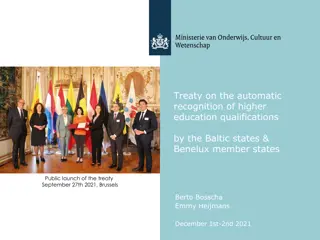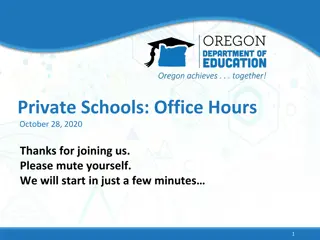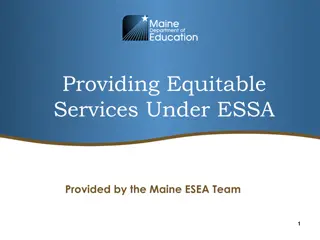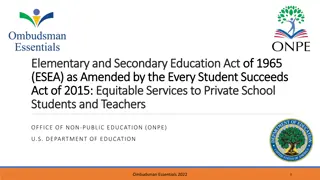Advancing Equitable Teaching Practices in Higher Education
The Transparency in Learning and Teaching (TILT) framework aims to promote students' conscious learning awareness and enable faculty to leverage student data for coordinated efforts. It advocates for transparent teaching methods to enhance student understanding and engagement, offering practical strategies like involving students in class planning, connecting learning data with activities, and discussing assignment goals. Implementing TILT can lead to improved student outcomes and reduced inequities in higher education.
Download Presentation

Please find below an Image/Link to download the presentation.
The content on the website is provided AS IS for your information and personal use only. It may not be sold, licensed, or shared on other websites without obtaining consent from the author.If you encounter any issues during the download, it is possible that the publisher has removed the file from their server.
You are allowed to download the files provided on this website for personal or commercial use, subject to the condition that they are used lawfully. All files are the property of their respective owners.
The content on the website is provided AS IS for your information and personal use only. It may not be sold, licensed, or shared on other websites without obtaining consent from the author.
E N D
Presentation Transcript
TILT: Transparency in Learning & Teaching 2022 UAA Assessment Retreat Britteny M. Howell & Stasia Straley
Concepts of TILT Transparency in Learning and Teaching (TILT) aims to advance equitable teaching & learning practices that reduce systemic inequities in higher ed through: 1) Promoting students conscious understanding of how they learn, and 2) Enabling faculty to gather, share, and benefit from current data about students learning to coordinate their efforts across disciplines and institutions
TILT in Higher Education Transparent teaching methods help students understand how and why they are learning course content in particular ways. Faculty participants are encouraged to employ one easy, transparent change and try to determine the impact of this small change on student learning.
Some Transparent Methods 1) Invite students to participate in class planning and agenda construction 2) Gauge students understanding during class via peer work on questions that require them to apply concepts you ve taught 3) Explicitly connect how people learn data with course activities 4) Engage students in applying the grading criteria that you ll use on their work 5) Debrief graded tests and assignments in class 6) Discuss assignments learning goals and design rationale
Transparent Method 6: TILTing Assignments 6) Discuss assignments learning goals and design rationale Chart out the skills students will practice in each assignment Begin each assignment by defining the learning benefits to students skills practiced content knowledge gained the tasks to be completed the criteria for success
TILTing Your Assignments 1. Purpose: (why are we doing this?) a. What are the objectives for the assignment? b. What skills will students practice doing this work and knowledge will they gain from doing the work? What will be involved and how will those be important in students lives and work beyond the assignment? Task: (what do we need to do?) a. What do students need to do to complete the assignment? b. How should they complete the task/steps? c. Clear instructions allow students to spend less time figuring out what to do and more time on the actual task. Criteria: (how will we know if we ve been successful?) a. What are the characteristics of a successful finished product? b. How will the assignment be assessed? c. Include a checklist of expectations or a rubric. d. Include an example of a successful (and possibly unsuccessful) product. 2. 3.
It Works 1. Students who received transparent instruction demonstrate elevated confidence, belonging, and metacognitive awareness of skill development. 2. Confidence and belonging are success predictors that correlate with increased persistence and higher grades. 3. Increases in student persistence for students who receive transparent instruction last at least two years. Benefits are greater for underserved (first generation, low income, underrepresented) students. 4. TILT assists in the metacognition process. 5. Providing examples allows students to begin at the same starting line, with equitable access to information about what good work looks like.
Additional TILT Resources 1. TILT course 2. TILT Website 3. TILT Examples and Resources 4. TILT FAQ 5. TILT Template 6. Transparent Assignment Template 7. Checklist one and Checklist two 8. Transparent Design in Higher Education Teaching and Leadership : A Guide to Implementing the Transparency Framework Institution-Wide to Improve Learning and Retention by Mary-Ann Winkelmes, Allison Boye, Suzanne Tapp, Peter Felten, and Ashley Finley
What questions do you have? Britteny M. Howell bmhowell2@alaska.edu Stasia Straley scstraley@alaska.edu
